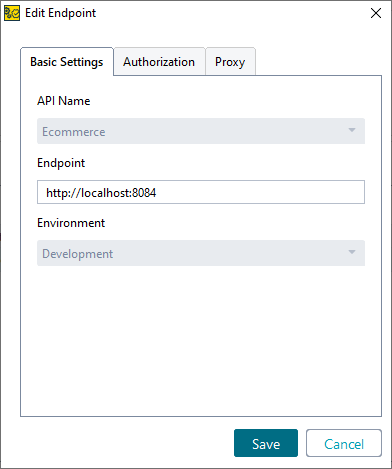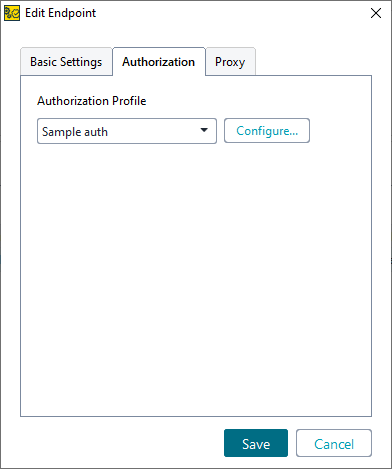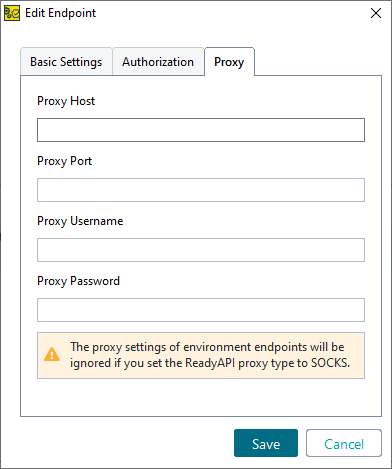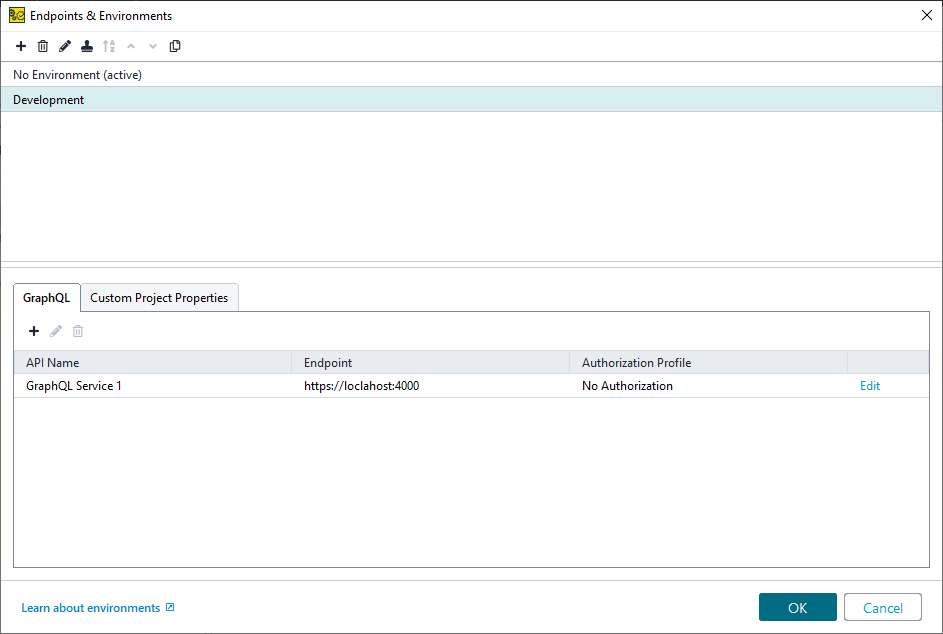The GraphQL tab of the Endpoints & Environments editor allows you to define environment-specific endpoints. The environment services will use these endpoints during test runs.
On the GraphQL tab, you can see all the available API endpoints in a table. The table has the following columns:
-
Name – The endpoint name.
-
Endpoint – The endpoint’s URL.
-
Authorization Profile – The authorization profile used in the selected environment for the endpoint.
To edit endpoint options, click Edit in the endpoint’s row, double-click the endpoint, or select the endpoint and click ![]() .
.
Here, you can edit the following options:
-
Basic settings - set the endpoint’s host and port.
-
Authorization - set the authorization used in requests to this endpoint.
-
Proxy - configures a proxy to access the endpoint.
Basic settings

| Option | Description | ||
|---|---|---|---|
| API Name |
The service name.
|
||
| Endpoint |
The endpoint's URL. |
||
| Environment |
The name of the environment.
|
Authorization

| Option | Description |
|---|---|
| Authorization Profile |
The Authorization profile. Click Configure to open the Auth Manager. |
Using Auth Profiles
To use authorization profiles in environments, you need to create a profile.
Click Configure to open the Auth Manager, or configure the authorization in any specific request.
You can then select the profile in the environment options.
Proxy

| Option | Description |
|---|---|
| Proxy Host |
The proxy's address. |
| Proxy Port |
The proxy's port. |
| Proxy Username |
The username for the proxy. |
| Proxy Password |
The password for the proxy. |
 |
The proxy settings of environment endpoints are ignored if you use the SOCKS proxy. |
See Also
SOAP Tab
Custom Project Properties Tab
JDBC Tab
JMS Tab
Environments

